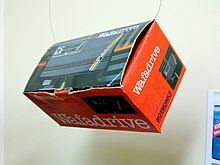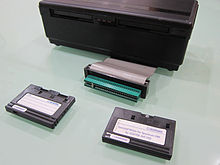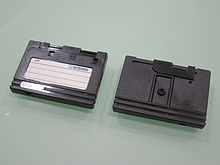Rotronics Wafadrive



The Rotronics Wafadrive was a continuous tape loop storage peripheral launched in late 1984 for the Sinclair ZX Spectrum 8-bit home computer, intended to compete with Sinclair's ZX Interface 1 and ZX Microdrive.
The Wafadrive comprised two continuous loop "stringy floppy" tape drives, an RS-232 interface and Centronics parallel port. The drives could run at two speeds: High speed (for seeking) and low speed (for reading/writing, which was significantly slower than that of Microdrives). The cartridges (or "wafers"), the same as those used in Entrepo stringy floppy devices for other microcomputers, were physically larger than Microdrive cartridges. They were available in three different capacities, nominally 16 kB, 64 kB or 128 kB. The larger sizes had the disadvantage of slower access, due to the longer length of tape.
The same drive mechanism, manufactured by BSR, and cartridges were used in a similar device known as the Quick Data Drive (QDD), designed to connect to the cassette port of Commodore 64 and Commodore VIC-20 home computers.
